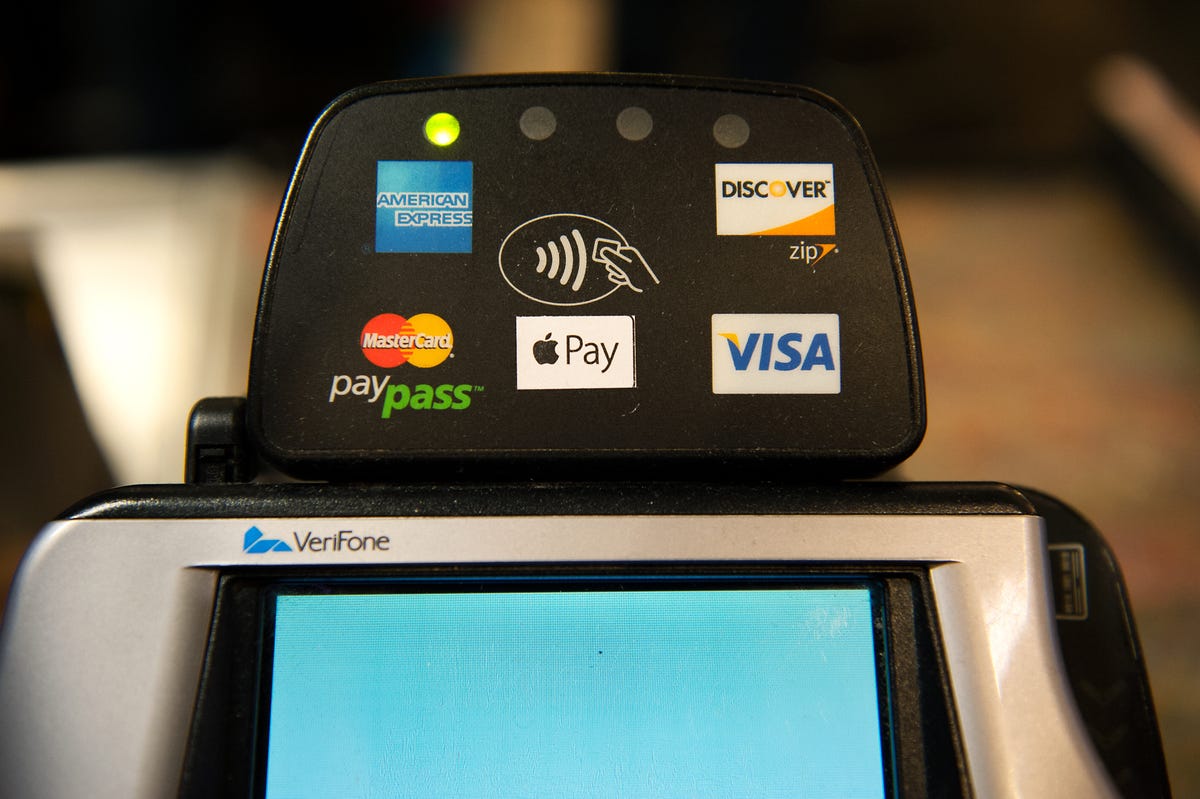
Bryan Thomas, Getty Images
Apple’s new payment system, which will soon be available on the new Apple Watch, is on a tear, according to Apple CEO Tim Cook.
In just three months, the contactless payment application, which uses near field communications (NFC) technology, is available in more than 700,000 locations, Cook said at an event in San Francisco Monday highlighting the company’s upcoming Apple Watch. Some of these new partners include the federal government, which allows people to use Apple Pay in national parks, and USA Technologies, which allows consumers to use the technology at parking meters, laundry machines and vending machines.


Now playing:
Watch this:
Check out how Apple Pay works on the Watch
0:58
The company has also expanded the number of banks it is working with to more than 2,500. When the service launched in October it worked with just six banks. But one of the most convenient places Apple Pay is available is on vending machines, Cook said. Coca-Cola now supports Apple Pay on 40,000 vending machines and has committed to having the application work on 100,000 vending machines by the end of the year.
Apple Pay, which launched in October on the iPhone 6 and 6 Plus, is a key feature of the new Apple Watch, which is expected to hit the market next month. Its NFC technology allows users to tap their devices at payment terminals in stores to buy things. Apple first introduced the capability with about 500 financial-institution partners and 220,000 US merchant locations that take mobile payments via NFC’s short-range, secure wireless capabilities.
The Apple Watch and Apple Pay are important components of Apple’s push to move beyond its popular iPhone franchise. The iconic smartphone, first introduced in 2007, makes up roughly 70 percent of the company’s sales, as of its December quarter. Apple Watch and Apple Pay are new products and services that offer strong potential that could augment these sales and help offset slower sales from the company’s struggling iPad tablet business.
Making Apple Pay easier to use
Apple Pay is meant to make paying for things online and in the real world easier and more secure. Its primary function is to replace the use of plastic credit cards.
Apple Pay itself is linked to credit card accounts, but it allows consumers to whip out their smartphones instead of pulling out a plastic card when it’s time to pay for things. Using NFC, the device is able to “talk” to payment terminals and complete transactions by charging users’ credit card accounts. In order for the application to work, both the device and the payment terminal need to have NFC chips embedded. Users’ identities are verified or authenticated using Apple’s Touch ID fingerprint reading technology, which the company claims makes it far more secure than using a plastic card.
But because devices require both the new NFC embedded chips and the Touch ID technology in order to access Apple Pay, the service is limited in who can use it. The biggest issue for Apple fans is that up to this point it has only worked on the new iPhone 6 and 6 Plus smartphones.
Now Apple Pay can be used via Apple Watch, which will allow Apple users with older iPhones to also use the payment service. Specifically, Apple users who own the iPhone 5, 5C and 5S will also be able to access Apple Pay. These Apple iPhone owners will also be able to access Apple Pay simply by entering a passcode or unlocking their Apple Watches with their phones.
The way it works is that the Apple Watch also has an NFC chip that makes mobile payments possible, but the watch itself doesn’t have TouchID, the fingerprint reading function used to authenticate users of an iPhone paying for items via Apple Pay. Instead, Apple Watch users will either enter a password on the watch or touch their fingerprint sensor on their iPhone after they’ve put on the wearable, which unlocks Apple Watch. (TouchID is supported on smartphones, the iPhone 5S, iPhone 6 and 6 Plus, as well as tablets, the iPad Air 2 and iPad Mini 3.)
Users won’t have to unlock their devices every time they want to use Apple Pay, though. As long as they haven’t taken off the device after pairing it with their phone or entering a password on the watch, it will remain unlocked.
Making Apple Watch a must-have
The big question many people are asking with the launch of the Apple Watch is whether Apple has cracked the code on turning a wearable computer into a must-have device. Even though “wearable” technology has been a hot buzzword among consumer electronics fans, it’s become clear that simply having a smart device strapped to the wrist isn’t necessarily enough to make consumers swoon. Companies, such as Pebble and Samsung, have struggled to find mass market appeal for their “wearable” devices.
Apple Pay is expected to be a key application that sets the Apple Watch apart from the others and give consumers a reason to buy it. But will payments alone be enough to entice consumers? That question is yet to be answered. It will likely take much more than payments, which is why Apple is also looking toward third party app developers to invest in finding new uses for the Apple Watch.
Still, mobile payments is a good place for Apple to start in terms of attracting customers. According to Gartner, the global market for mobile payments is forecast to be about $720 billion worth of transactions by 2017. This is up from about $235 billion last year.
Mobile payments is also a natural progression for Apple. The company already lets hundreds of millions of users — about 800 million, as of Apple’s earnings in April— buy music, books, and apps through an iTunes account linked to their credit cards. Expanding this payment process into a digital wallet is a feasible shift for the company.



